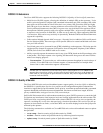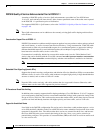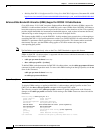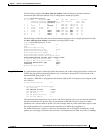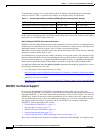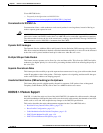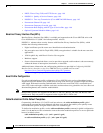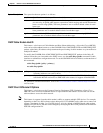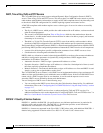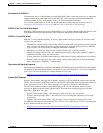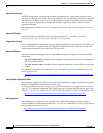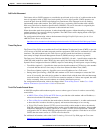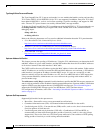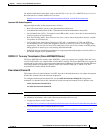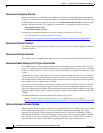
1-59
Cisco uBR7200 Series Universal Broadband Router Software Configuration Guide
OL-2239-05
Chapter1 Overview of Cisco uBR7200 Series Software
Supported Software Features for the Cisco uBR7200 Series
Syntax Description The syntax for the new options is as follows:
DHCP Cable Modem Host ID
This feature—also known as Cable Modem and Host Subnet Addressing—allows the Cisco uBR7200
series universal broadband router to set the GIADDR field of DHCPDISCOVER and DHCPREQUEST
packets with a Relay IP address to help automate the provisioning of cable modems on systems that use
multiple IP subnets.
To modify the GIADDR field of DHCPDISCOVER and DHCPREQUEST packets with a Relay IP
address before they are forwarded to the DHCP server, use the cable dhcp-giaddr command in cable
interface or subinterface configuration mode. To set the GIADDR field to its default, use the no form of
this command.
cable dhcp-giaddr [policy | primary]
no cable dhcp-giaddr
Syntax Description
For additional command information, refer to the Cisco Broadband Cable Command Reference Guide
on Cisco.com.
DHCP Client ID/Remote ID Options
This feature—also known as the Customer Premises Equipment (CPE) Limitation—allows Cisco
uBR7200 series universal broadband routers to report and limit the number of CPEs that can use the
cable modem to access the cable network.
Note This feature is separate from the cable modem's ability to support multiple CPE devices. For example,
depending on the Cisco IOS software release being used, Cisco uBR900 series cable access routers can
support a maximum of either 3 or 254 CPE devices. Also, by default, a DOCSIS-based cable modem
supports one CPE device, but this can be changed by modifying the MAX CPE parameter in the modem's
DOCSIS configuration file.
profile Specifies the modulation profile number (1-8).
mix Creates a default QPSK/16-QAM mix modulation profile where short and long grant bursts
are sent using 16-QAM, while request, request data, initial ranging, and station maintenance
bursts are sent using QPSK). The burst parameters are set to their default values for each
burst type.
qam-16 Creates a default 16-QAM modulation profile, where all bursts are sent using 16-QAM. The
burst parameters are set to their default values for each burst type.
qpsk Creates a default QPSK modulation profile, where all bursts are sent using QPSK. The burst
parameters are set to their default values for each burst type.
policy (Optional) Selects the control policy, so the primary address is used for CMs and the
secondary addresses are used for hosts.
primary (Optional) Always selects the primary address to be used for the GIADDR field. Primarily
used for the MC16E card and Cisco uBR7100E series routers, for support of EuroDOCSIS.



